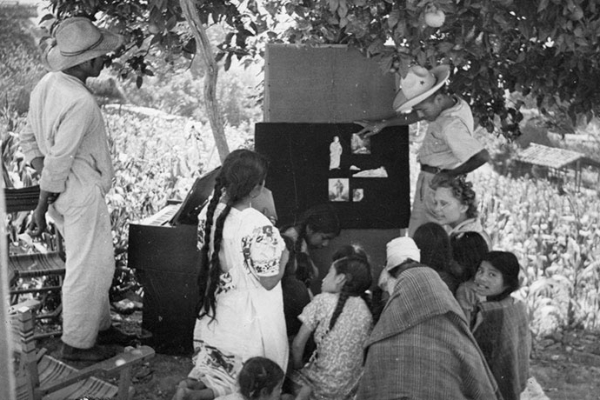God Speaks Navajo

The following story is adapted from Ethel Wallis’ 1959 book “Two Thousand Tongues to Go,” which recounts the story of Wycliffe Bible Translators. In one chapter, Wallis details the progress among the Navajo translation team, which was spearheaded primarily by Faye Edgerton and other women.
Veteran of the Navajo translation team is a gentle gray-haired lady nearing 70 years of age. But to see Faye Edgerton walking briskly to a Hogan (a traditional Navajo dwelling) to visit her Native American friends or driving across the reservation in her Volkswagen, one would never guess she had passed the age of retirement. “Her repeated winters” with the Navajos — to use their own expression — have produced an understanding love for them. And Faye Edgerton will very likely repeat many more winters among the Navajos and Apaches, with whom she is also working with her translation partner, Faith Hill.
But Faye Edgerton did not begin her missionary career in the Arizona desert. As a young woman, she spent several years in Korea, only to have her mission work there prematurely terminated by an illness preventing her return to Asia. It was during 1924 that she went to live on the Navajo reservation.

During her period of service in Korea, she had been impressed with one great fact: The faith of the Korean Christians was strong and contagious because they had the Bible in their own language. Hence Christianity was no longer a foreign religion; it was distinctively Korean. The missionary transplanted from Korea to the Navajo reservation could not quench a burning conviction that the Navajos, too, needed the Bible in their language.
But not many missionaries on the reservation in the 1920s shared her conviction. Navajo was very difficult for English speakers to learn and there were few written helps, for there was no written tradition. Faye Edgerton could study only on rainy days when other mission activities were curtailed. But she was always listening, learning and trying to master the intricate language which intrigued her.
In 1941, while still searching for an efficient way to write and speak Navajo, she met the Blounts. It was a happy meeting, for the trio found they had a common purpose — the mastery of the Navajo language for translation of the New Testament. They began working together on phonetics. Occasionally, Turner Blount would suggest a “glottal stop” or a “voiceless I” that Faye Edgerton might be missing. With characteristic frankness, she told him he was “hearing things.” After all, she had been studying the language a good deal longer than he!
“Well,” said the easygoing linguist from California, “if you don’t believe me, why don’t you go over and take the course at the Summer Institute of Linguistics?”
So she did, in the summer of 1942. “And then,” says Turner Blount with a hearty laugh, “Faye began to ‘hear things’!” And she really began to speak Navajo!
In 1944, the trio joined Wycliffe Bible Translators and began a concentrated effort to complete translation of the New Testament. In 1946, Faith Hill joined the Wycliffe team, followed in 1950 by Anita Wencker. The five worked steadily until, in 1954, the manuscript of the New Testament was completed and submitted to the American Bible Society for printing. With Faye Edgerton carrying the main burden of the actual translation, other members of the team devoted themselves to literacy work and testing trial versions with their readers. Only a translation in genuine idiomatic Navajo would communicate the Scriptures to their hearts and minds — and not just be “the white man’s book of heaven” in white man’s Navajo!
Discover how your prayers can support Bible translation work.






